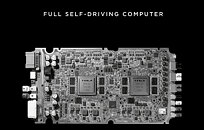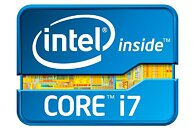Wednesday, July 22nd 2020
Jim Keller on Moore's Law, Microprocessors, and Designing Chips from Scratch
Jim Keller on Lex Fridman's AI Podcast shed some light on his thoughts on the microprocessor design fundamentals as he sees them. In a hour-and-a-half-long interview, he approaches Moore's Law and its much lauded - and ubiquitously repeated - death, as well as the need for both iterative and zero-point microprocessor design requirements.
Mr. Keller approaches the usual microprocessor design loop, where a company develops a new design from scratch and then looks at the most fundamental way of adding performance. Usually, he says, easy 10% performance increments can be found by simply looking at a design and increasing execution units - increase a buffer here, increase a cache over there, put in another add processor on this part of the pipeline. However, he also speaks of how this process in itself is limiting, inasmuch as doing this often will eventually guide processor designs towards a bottleneck and the diminishing returns problem, where any more additions made to the design don't seem to increase performance - mostly just adding complexity, area and power requirements, and generally convoluting a given design.Mr. Keller says - and this should go without saying - that that is the point where teams should see that the design in itself is already limiting - and that that's when you do something from scratch. And for Mr. Keller, fast advances in performance in the world of microprocessors depend on 3-5 year cycles of building a new processing design from scratch. His work in the microprocessor world usually comes in at this point - Mr. Keller has established himself as one of the foremost leaders of microprocessor design teams when looking at a clean-slate design, with his stints at AMD (collaborating on their K7, K8, and K12 designs alongside the HyperTransport bus), Apple (for their A4 and A5 microprocessors, which are now in the iterative phase), Tesla (with their HW 3.0 designs for autonomous driving) and AMD's Zen.Of course, then comes Intel, which Keller himself describes as having a microprocessor development mindset that's closer to a 10-year sustained designed rather than the 3-5 year development schedule for a new architecture he favors. Interestingly, in the podcast, Jim Keller approaches this microarchitecture mindset on Intel from a short-term and long-term disaster perspective. According to him, repeating and refining a recipe (like Intel did many years with their Core architecture [author's side-note]) is the most efficient way to go about it: incrementally improving a design, saving money and taking a low-risk approach to processor development, albeit threatened by the diminishing returns equation we mentioned earlier.The problem, according to Mr. Keller, is that managing quarter to quarter means that there is fear in hitting a short-term disaster with a rewrite from scratch; companies thus look to "milk" every ounce of profit from a previous design by incrementally improving it. However, this primes companies to hit a long-term disaster, much like we see today with Intel (it's not a disaster for a multi-billion dollar company like Intel, but you get the point): its architecture, which didn't go through a from-scratch design phase for years, was superseded by AMD's new Zen design and its iterations.
According to Mr. Keller, managers that don't look only quarter to quarter but have a longer outlook know that a short-term disaster - a new architecture design not panning out with all the costs that entails - is better in the long-term outlook than the other way around. This is what AMD looked to do after its Bulldozer architecture and derivatives - a company that was in financial dire straits saw that the only way forward was to start another design from scratch, instead of keeping on shoveling itself towards the ground with more years funneled into a dying microprocessor design that couldn't compete with Intel's previous or current ones. As to this, it's likely we'll be seeing the fruits of Mr. Keller's stint at Intel in the near future, though for now, it's still somewhat nebulous as to what designs will actually surface from his more than two-year tenure at the blue giant.Closing up this article, which doesn't aim to be a summation of the AI Podcast, but aims to highlight some interesting tidbits present there, are Mr. Keller's thoughts on team management for a technological project. According to him, he sees the existence of abstraction layers in microprocessor design teams. Where a team of 10 humans works well together, and a team of up to 100 people may be able to function properly under a single supervision, any more than that and teams have to be divided, with organizational boundaries having to be set - and here too appears the diminishing returns equation. Jim Keller says some very interesting things regarding this, as in, that humans in general aren't getting smarter - so there is a fundamental limit to how much "processing power" you can have in a team working on a set project, considering team and size and communication capacity caps that derive from the fact that we are, well, humans.
And of course, you can have the most brilliant people in their given field working in a single design - but sometimes those people won't work well together. Adding to that, microprocessor development can sometimes lead toward instances where functions and transistor parts from where performance increments are being etched into a given product design change, and some people in the team aren't needed anymore, because their particular field of expertise has reached a diminishing returns plateau that is no longer pursuable.
TL;DR: Jim Keller is clearly an extremely accomplished microprocessor designer, but also a project leader, and has very clear ideas regarding the industry and his field of work. You should read the entire article and then move onto the podcast.
Source:
Lex Fridman's AI Podcast
Mr. Keller approaches the usual microprocessor design loop, where a company develops a new design from scratch and then looks at the most fundamental way of adding performance. Usually, he says, easy 10% performance increments can be found by simply looking at a design and increasing execution units - increase a buffer here, increase a cache over there, put in another add processor on this part of the pipeline. However, he also speaks of how this process in itself is limiting, inasmuch as doing this often will eventually guide processor designs towards a bottleneck and the diminishing returns problem, where any more additions made to the design don't seem to increase performance - mostly just adding complexity, area and power requirements, and generally convoluting a given design.Mr. Keller says - and this should go without saying - that that is the point where teams should see that the design in itself is already limiting - and that that's when you do something from scratch. And for Mr. Keller, fast advances in performance in the world of microprocessors depend on 3-5 year cycles of building a new processing design from scratch. His work in the microprocessor world usually comes in at this point - Mr. Keller has established himself as one of the foremost leaders of microprocessor design teams when looking at a clean-slate design, with his stints at AMD (collaborating on their K7, K8, and K12 designs alongside the HyperTransport bus), Apple (for their A4 and A5 microprocessors, which are now in the iterative phase), Tesla (with their HW 3.0 designs for autonomous driving) and AMD's Zen.Of course, then comes Intel, which Keller himself describes as having a microprocessor development mindset that's closer to a 10-year sustained designed rather than the 3-5 year development schedule for a new architecture he favors. Interestingly, in the podcast, Jim Keller approaches this microarchitecture mindset on Intel from a short-term and long-term disaster perspective. According to him, repeating and refining a recipe (like Intel did many years with their Core architecture [author's side-note]) is the most efficient way to go about it: incrementally improving a design, saving money and taking a low-risk approach to processor development, albeit threatened by the diminishing returns equation we mentioned earlier.The problem, according to Mr. Keller, is that managing quarter to quarter means that there is fear in hitting a short-term disaster with a rewrite from scratch; companies thus look to "milk" every ounce of profit from a previous design by incrementally improving it. However, this primes companies to hit a long-term disaster, much like we see today with Intel (it's not a disaster for a multi-billion dollar company like Intel, but you get the point): its architecture, which didn't go through a from-scratch design phase for years, was superseded by AMD's new Zen design and its iterations.
According to Mr. Keller, managers that don't look only quarter to quarter but have a longer outlook know that a short-term disaster - a new architecture design not panning out with all the costs that entails - is better in the long-term outlook than the other way around. This is what AMD looked to do after its Bulldozer architecture and derivatives - a company that was in financial dire straits saw that the only way forward was to start another design from scratch, instead of keeping on shoveling itself towards the ground with more years funneled into a dying microprocessor design that couldn't compete with Intel's previous or current ones. As to this, it's likely we'll be seeing the fruits of Mr. Keller's stint at Intel in the near future, though for now, it's still somewhat nebulous as to what designs will actually surface from his more than two-year tenure at the blue giant.Closing up this article, which doesn't aim to be a summation of the AI Podcast, but aims to highlight some interesting tidbits present there, are Mr. Keller's thoughts on team management for a technological project. According to him, he sees the existence of abstraction layers in microprocessor design teams. Where a team of 10 humans works well together, and a team of up to 100 people may be able to function properly under a single supervision, any more than that and teams have to be divided, with organizational boundaries having to be set - and here too appears the diminishing returns equation. Jim Keller says some very interesting things regarding this, as in, that humans in general aren't getting smarter - so there is a fundamental limit to how much "processing power" you can have in a team working on a set project, considering team and size and communication capacity caps that derive from the fact that we are, well, humans.
And of course, you can have the most brilliant people in their given field working in a single design - but sometimes those people won't work well together. Adding to that, microprocessor development can sometimes lead toward instances where functions and transistor parts from where performance increments are being etched into a given product design change, and some people in the team aren't needed anymore, because their particular field of expertise has reached a diminishing returns plateau that is no longer pursuable.
TL;DR: Jim Keller is clearly an extremely accomplished microprocessor designer, but also a project leader, and has very clear ideas regarding the industry and his field of work. You should read the entire article and then move onto the podcast.






12 Comments on Jim Keller on Moore's Law, Microprocessors, and Designing Chips from Scratch
Took me a bit to find it.
Cheers
en.wikipedia.org/wiki/Scratch_(programming_language)
I've seen this before, a good while ago.
Worth a second listen tbf.